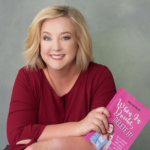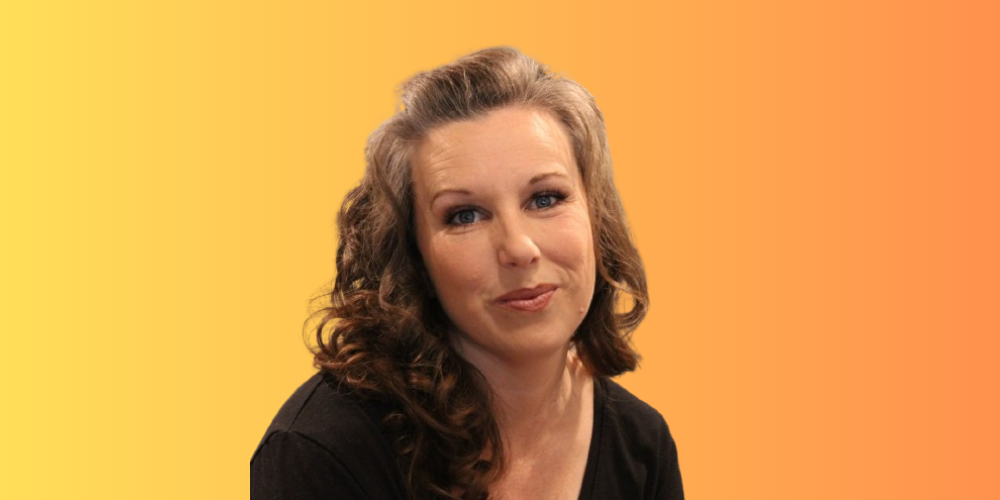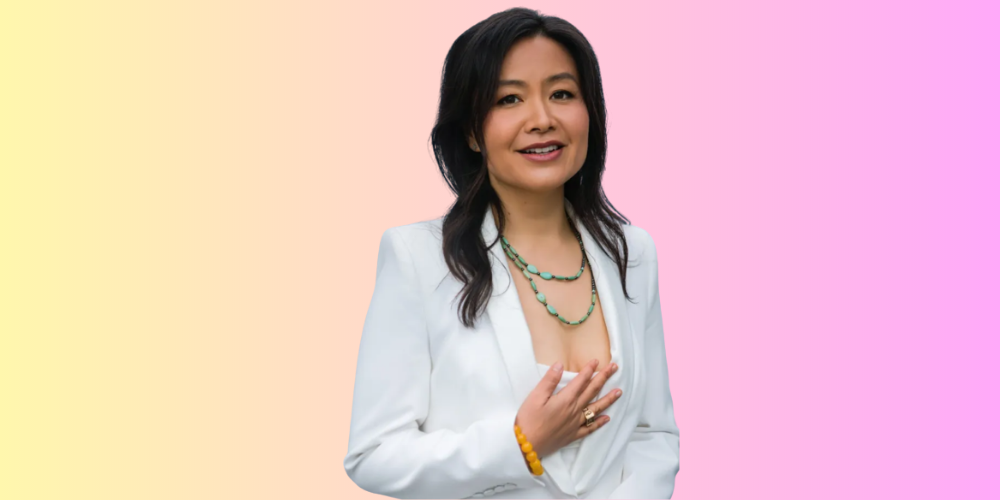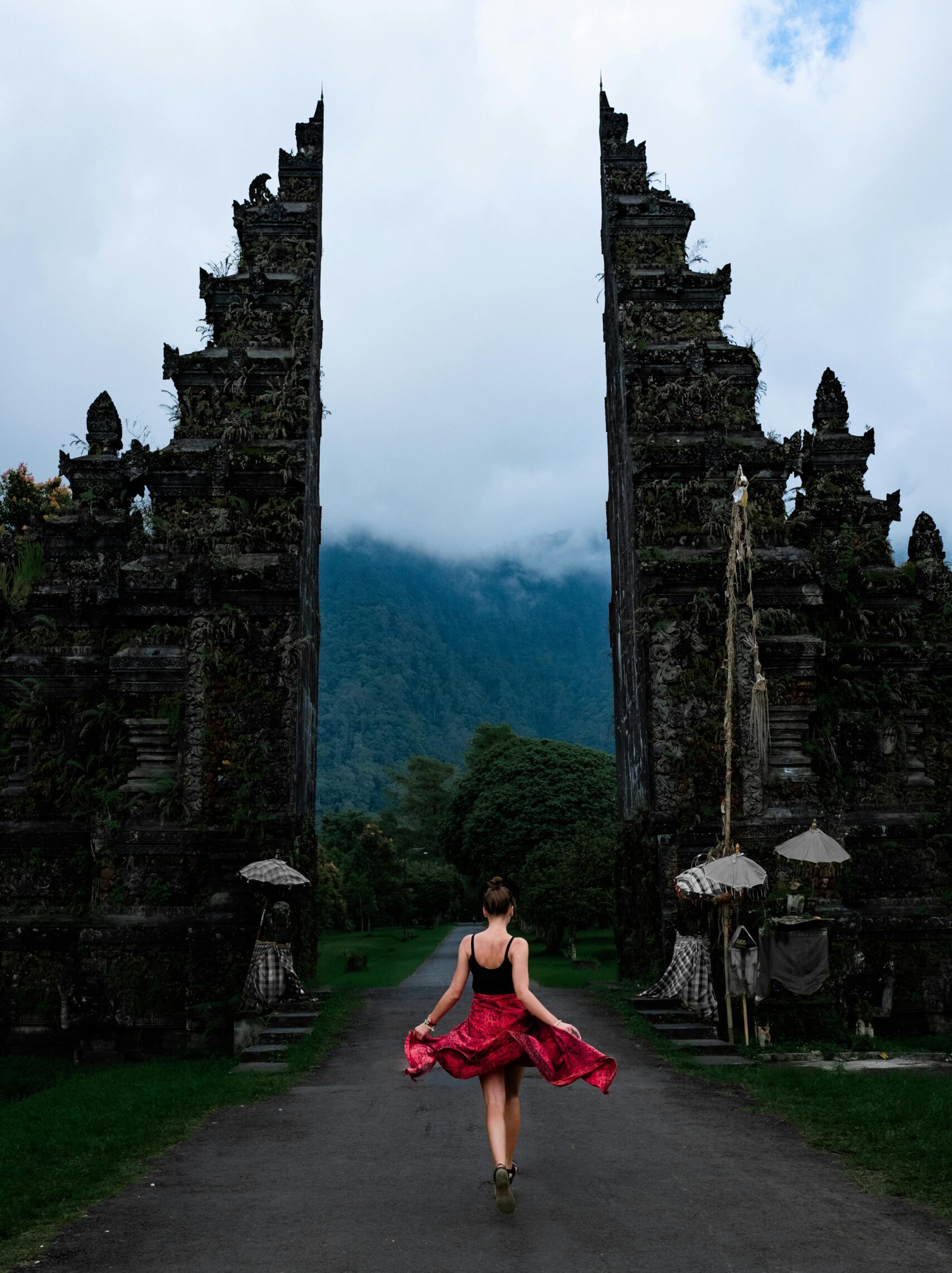Raj Girn: The theme this week, as is always for week one of a month, is Mindset and Clarity. And the two-part series is entitled `How to Dial a Wellness, Yoga and Meditation Practice Into a Busy Work Day.` My guest is certified yoga, meditation, and Reiki coach and the founder of SpiritWarriorNation.com, Thara Natalie. And here’s what we cover in part one of our conversation.
Here’s a bit about Thara before I bring her on. From singer to Spirit Warrior, Thara Natalie transitioned from the music industry in 2008 to align her lifestyle to a more holistic way of living. This brought her to the practice of yoga, which she has been doing for over 19 years, along with teaching yoga and meditation for 12 years. She has also been a health coach for 19 years and moved into Reiki practice in 2013, making the ultimate connection between mind, body and soul to her mastery of meditation, reiki and yoga, which are offered to the public at SpiritWarriorNation.com.
Here is Part One of our conversation:
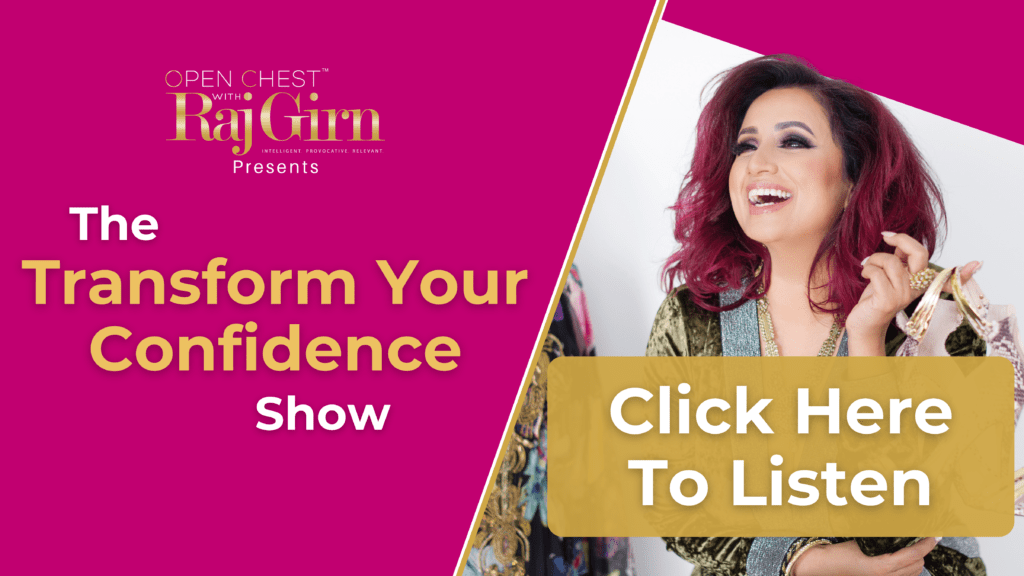
Raj Girn: Thara, I’m so excited to have you on my show, you and I had a great conversation actually about a year ago.
Thara Natalie: Yeah, very early in.
Yeah, right. And a lot has happened in your world and in my world. In the world, actually, hasn’t it.
Yeah. A lot has happened and then a lot has not happened in a weird way. Right?
Yeah. I think the universe, I think Mother Earth, I think the energies that are everywhere are telling us that they need to be in charge right now. And that’s, I guess, a whole other conversation.
Also very tied in in the sense of Mother Earth asked us to all slow down. Which completely ties into everything that we’re going to talk about today.
Absolutely. What I want to do, folks, is I brought Thara on. I’ve been waiting for her, scheduled to be available to have this conversation. I’m so happy that we’re having it now. And the reason why I want to do this is a lot of people contact me and they talk about yoga and meditation and mindfulness and wellness and all these things. And there’s so much confusion out there, especially this last year, Thara, where everyone’s had the opportunity to kind of sit at home and look more within. They’ve been looking at opportunities of how they can create an ecosystem within themselves, within their immediate environment that is more cohesive for them to feel healthy about who they are and what is going on right now in this world that they can’t control. So people are looking to control more about what’s happening within them themselves.
That’s all that we can control. We can’t control what’s going on out there. We can only control how we respond and how we react.
Absolutely. So with that said, I felt let’s have that conversation that a lot of people are having out there, but there’s a lot of kind of confusion around it because: What is meditation? What is yoga? What is wellness? And how do we kind of create a cohesive, holistic, lifestyle for ourselves? And so I kind of want to take it right to brass tacks and start right at the beginning. I want to get your perspective, because you’ve been in this space of meditation, wellness, yoga, nutrition for a number of decades now, a long time, right?
Well, I don’t believe. Yeah, over two decades now. That ages of me. But it’s okay. I love it.
Well, if age is what you look like, then I think we’re totally cool. Then I think everybody needs to do mindfulness meditation and all the wonderful things we’re going to talk about. So let’s start from the beginning, Thara. What you know in your perspective, in your experience is meditation?
It’s a big question. And you the way you framed it too, in my perspective, and I think that’s an important way to frame it, because I do believe that it’s different for everyone. And I do believe that everyone has to find their form of meditation that works for them, because as we’ll continue to share, there are so many. So when I started yoga, my yoga was my moving meditation. So that was really how I began my meditation journey. I wasn’t able to just sit in stillness and meditate when I first started, but I loved my yoga practice because it was the only time that I shut my brain off. I shut my thoughts off and I was just there with my body and my breath. That was it. So that’s really the point. There are many different ways to access it, but the point is to just be present with yourself and with your breath.
“There are many different ways to access it [meditation], but the point is to just be present with yourself and with your breath.” ~Thara Natalie
I love that. Be present with yourself and your breath. So that’s your definition of meditation. It couldn’t be a better one to lead us into my next question, which is what are the benefits of meditation? Why should people do it?
Yeah. Oh, my gosh. So it’s like a laundry list of benefits, right. So there’s a psychological benefits for our mental health and then there’s actual physiological benefits as well, which I think is really interesting to understand that there are actual physical things that happen to your body when you meditate. Like more oxygen to your body, like your heart rate — getting a lower resting heart rate. Things like helping your body to have less of a stress reaction. It helps to reduce inflammation in your body because when we’re stressed, we’re inflamed. And what does inflammation lead to? Disease. So it’s like on a physical level, meditating has so many health benefits for you. So often, like right now, this past year or so, many people are suffering with anxiety. You’re suffering through depression. Meditating helps with all of that. So it has so many special and different benefits, both mentally and physically for us.
I love that. And we broached the topic, but it’s such a deep conversation to have. And I hope as we continue in this conversation Thara that people get more nuggets of wisdom and can kind of — even if it’s a practice that they haven’t really thought about because they’ve thought that it’s such a woo woo thing or it’s a cultural kind of cliche, kitschy thing. And my goal with this show is for people to understand that meditation, yoga, wellness, nutrition, all of these work together to cohesively create the best way of living your life. Because it’s the only things you can really control. And we’ve learned that this year. So I want to ask you this. Can you take us through your recommendations on how to start a meditation practice from the mindset and discipline side to the tools of the tactical side that people should be doing?
Yes, just start. Cause we get in our own ways as human beings and we create all these parameters upon which we need to start things. And the great thing about meditating is you already have everything you need. What did I say? We need our body and our breath. So you don’t need anything. Right? You just need to show up and start with five minute. Start with five minutes. Don’t start with 20. Don’t go for the big goal. Start small, start with five minutes and then increment incrementally every day. You can add a minute or every week, whatever feels comfortable for you, but start small. Set a time and don’t set an unrealistic time, right?
So give me an example of what you mean by that.
So people have this idea that they need to meditate at sunrise. Which, yes. In a perfect world, that’s wonderful. And yes, is it ayurvedically the perfect time to meditate? Absolutely. Is it possible for all of us to do that? Probably not. If you are a mom with kids meditating in the morning might be really difficult for you. So before I had kids, yes, that was what my meditation practice looked like. It was the first thing that I did when I woke up in the morning. That’s not what my meditation practice looks like anymore. I meditate after I’ve dropped Ava to school and after I’ve gotten a few things done. And then I take a break from my meditation. And then I typically always meditate at night before bed because that’s another thing that I love doing. But again, it’s finding a time that works for you, not what your friend does, not what you saw some podcast or someone you know that you’re following share. Find the time that works for you. That’s so important.
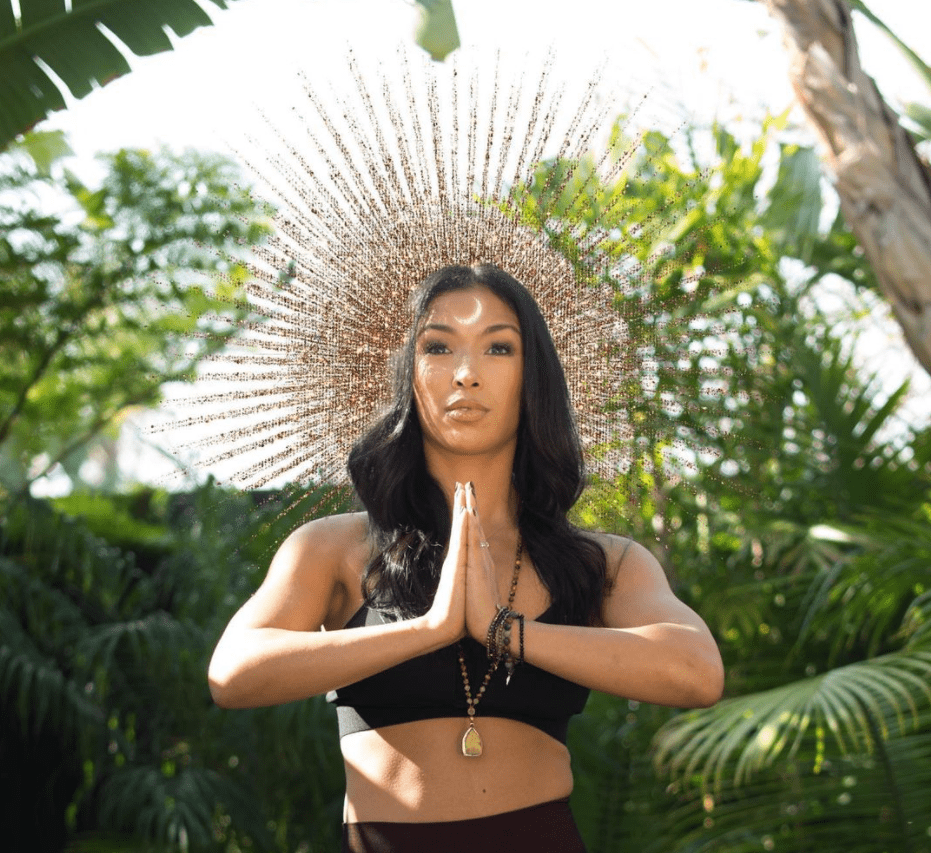
I love that. I love, love, love everything about what you just said because there is this kind of inherent pressure. But you feel it’s kind of like when they talk about having kind of the millionaire mindset. From a business standpoint, you’ve got to get up at five a.m., you’ve got to do this and all the rest of it. Same with meditation. If you’re not doing it right at sunrise and doing your kind of sun salutations — which not everyone gets to do that — that literally the rest of the day, it’s almost like you don’t have permission to meditate. And you’re literally saying that your permission to meditate is the time that makes sense for you and your body, your mind, your heart, your soul, everything will resonate with that. Because you’re going to be on your clock, on your clock of life.
“Your permission to meditate is the time that makes sense for you and your body, your mind, your heart, your soul, everything will resonate with that” ~Raj Grin
Yeah. And it’s supposed to be a time of peace, a time of calm, a time of relaxation. The last thing you want is to put all this pressure around it. Because, oh, I didn’t do it this morning and now I can’t do it for the rest of the day. This is the feedback I get that people because they think they didn’t do it when they were supposed to do it, it’s like ruining their day, right?
You’re so right.
You’re defeating the whole purpose. So that’s really important. Do it at a time that works for you. Start in small increments. And I love anchors so you can use anchoring practices to help you. So for some people, they might love lighting a candle. And what happens with our brain is we create pathways, neuron pathways in our brain that strengthen when we do something over and over again. So that’s how we create habits. So if we do the same process, every time we prepare to meditate, your brain starts to know, okay, when these things start happening, we know we’re getting ready to meditate and it will then start to help you faster. So when you light that candle or when you burn that incense, it triggers your brain to know, okay, this is what’s coming. Your body just automatically starts to relax and prepare you to be in that space. So anchors are nice if you want to try incorporating that. But like I said, you don’t need it. But if it’s something that you feel like will help you, do it.
Right. So let me ask you this then around the whole kind of idea of meditating. Obviously, there’s many different ways that you can do it. How do you find the right way for you? Like, what should you be getting out of your meditation practice, I guess, is the question?
My meditation looks different every day. I’ve been in this world for 20 years. I have done every single type of meditation. I have listened to all of the different, you know, whether it’s a YouTube video, whether it’s someone guiding, whether it’s using my mala beads to count my mala beads, whether it’s using a candle to focus. So I share that because I want you to understand that it’s always going to ebb and flow. And no matter how practiced you become, our life ebbs and flows. So our meditation practice will do the same. So go into it knowing that. And then, yes, you have to play. See where you feel good. So one of the first things I always teach is if you’re sitting in what we call sukhasana, a full lotus pose or half lotus pose, sitting cross-legged on the floor and your uncomfortable, you can’t meditate. If you’re like, “oh, my knee really hurts.” You’re not meditating, you’re thinking about the knee that’s hurting you. So don’t sit in an uncomfortable position. We want to be grounded. There’s that idea of grounding and connecting. But again, finding what works for you. So my meditation practice every day is different. So some days I sit on my meditation cushion. Some days I sit in a chair. Some days I sit on the couch with my legs at the knees. I lay on the floor. When I’m energetically drained, I literally lay on the floor. It’s whatever I need that day.

Right. It’s really interesting you’re saying that because I was watching this YouTube video with Sadhguru and he was mentioning that the importance of posture isn’t about kind of sitting cross-legged or doing all these other things. It’s about making sure that your chakras are all kind of aligned. So your positioning of your body. And of course, this comes into the whole Reiki practice, which I know is also something that you are very much a practitioner. You’re a master in that arena. You want to mention that a little bit as well, Thara. How does that fit into the whole thing in terms of meditating, Reiki practice? Because I know they go hand in hand, as does yoga, which we’ll talk about in a minute. But just from your perspective, how do you do it and why do you do it that way?
So for me, Reiki was the last tool that came into my toolkit a few years ago. The definition of Karuna Reiki is compassionate love. What better? Compassionate love, it’s just like makes your heart open. We just want to live in a space of compassionate love in everything that we do. And I feel like my Reiki practice really, really solidified that deep human connection. That understanding that I am you and you are me and we’re brothers and sisters in this world together. And we’re all one. And when you understand that we’re all one, it changes the way that you treat other beings.
Right.
So, I mean, my seven-year-old teases me and tells me that I’m too kind. And I’m like, fine Ava I’ll be too kind. I’m okay with that. I will always look for the good in people. I will always. But it’s through all of these practices. It’s through my meditation because I’ve learned to have so much forgiveness for myself and compassion for myself, that I’m able to have that for other people.
That’s huge what you just said there. I find, especially with my own meditation practice and I also practice Reiki as well, that when I’m kind to myself in the layers of who I am, physically, emotionally, mentally, spiritually, I find that it resonates with everything else that I do. And the other thing is that when I feel stress or anxiety — we’re all human, we do, no matter how we meditate, no matter how much you do any of this — I’m quickly able to kind of tap into the fact that it’s almost like cowbells going off that, okay, you are not in alignment right now and it helps you to kind of re-discipline yourself, which I think is also the other part of meditation that a lot of people don’t really talk about. It’s not just what’s happening to you when you’re in your space of meditation, but it’s when you’re not in that space that you recognize the things a lot clearer that aren’t resonating with you, working for you, right?
Absolutely. I mean, that’s the whole point, right? It’s about taking it off of the mat, taking it off of the meditation cushion, and applying it to your real life 100 per cent. Being able, the same way that you’re taking a pause when you’re meditating, is the same way that you want to then take a pause in your life. When something happens and you get stressed instead of immediately reacting, you want to pause and take that breath before you respond to someone.
Right. Which I think, Thara, is really awesome for people who are in high stress positions, whether it is juggling a lot of things at home. Whether it is these kind of very high stress work environments — people in leadership positions, people who have a lot of responsibility, and they’re dealing with a lot of turmoil right now if they’re in leadership positions because a lot is going on. It’s hard to lead virtually. And it’s hard to lead a gig economy. There’s a lot going on right now that’s very difficult for people. And I feel that a lot of people should tap into what meditation can do to help them in these types of times that we’re in. A lot of people in the entrepreneurial space, in the work environment are starting to get into this because they’re starting to see how important this is. But for those people out there who don’t really see the connection, what would you say to them?
I would say… I mean, one of the things I love practicing with my corporate clients is taking a breath break instead of taking a coffee break.
“One of the things I love practicing with my corporate clients is taking a breath break instead of taking a coffee break.” ~Thara Natalie
Oh, I love that. Yeah. Tell me, what does that look like?
Because we really just need to pause and breathe half the time. We’re not getting enough oxygen. When you’re in a high-stress job, you’re chest breathing, which is causing anxiety in the moment. It’s raising your heart rate. It’s causing inflammation in your body. You’re actually activating your fight or flight nervous system. It thinks something’s wrong and your muscles are constricting and tightening. So you literally just need to pause. I say put one hand on your heart, one hand on your belly. And send your breath all the way down to your belly. So what happens when we chest breathe, your chest is moving. We don’t want the chest to move. We want that low, rooted, diaphragmatic breathing. You can just pause and do that in your day. Five breaths. It changes your entire state. You could do it in the bathroom, you can do it sitting at your desk. Again, you don’t need anything to do that. But it’s just it’s so important. I think people are realizing more and more that connection. That mind body connection and how we’re working too hard, Raj.
I know, sweetheart.
Everyone’s working too hard. You know?
Especially moms. Like, I don’t know how. You’re a prime example of that, right? You are a working mother, right? You have two young kids at home. You have a husband that has a job that has him in and out. I mean, how do you…? That just sounds like chaos. So a lot of women are going through this right now. What can you say to them?
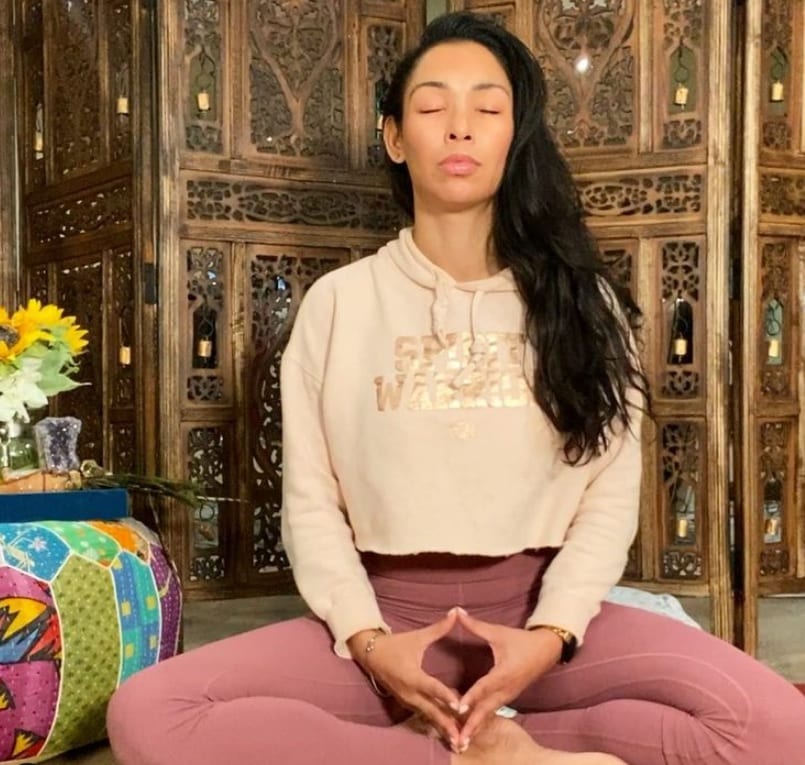
So I think as far as working moms and just moms in general, right? We’re all working. Yes, you have to I almost . . .
I’m going to stop you a second. I don’t like that statement. You know, when we say working moms, when are they not working?
That’s what I’m saying. They’re all working. We’re all working. It’s a full time job. So, yes, we’re all working. They don’t they often don’t take enough time for themselves. There’s so much guilt around taking time for themselves, it blows my mind. And the best thing that you can do for your family is take time for yourself.
Yes. That’s a big yes from me, girlfriend.
Yeah. You’re a better mother. You’re a better wife when you’ve had that time for yourself.
Absolutely. So let me ask you this then, Thara. For people out there who are looking to start their meditation practice, so maybe they’re looking to kind of level it up or diversify it in some way, what are some things that they shouldn’t be doing that you have seen when you’re working with your clients are common mistakes? Like what can you share?
Common mistakes? The first biggest mistake is people telling me that they can’t meditate. I can’t meditate.
That’s a big one.
That’s a huge one. I can’t meditate. It’s too hard. I’m not good at it. Well, it’s a practice. It’s an exercise. We have to work the meditation brain. We are going at 500 miles an hour all the time. So, yes, it’s going to take a moment to teach your brain. That it’s time to slow down. So the same practice that you apply to going to the gym and learning how to lift weights. When you first go, you don’t know how to do it. The machines look foreign. You don’t know what they are. You don’t know how to use them. You’re not strong enough. But then you hire a trainer and you learn. And within a few months you’re like, “oh, I’m good at this now.” It’s the same thing. But for some reason, people think because it seems simple, that they’re going to be able to just sit down and drop everything and meditate. And then when that doesn’t happen, I’m not good at it.
You so right.
You haven’t tried hard enough.
That’s like me in the gym.
Get a trainer.
It’s not rocket scientist stuff. Right?
Get someone to help you? So that’s number one. The not good at it being. The number two biggest mistake I hear is people think that meditation is about quieting your thoughts or clearing your mind. That’s the biggest word I hear. I can’t clear my mind. I didn’t ask you to clear your mind. I just asked you to become aware of what your thoughts are,
Oh, my gosh, that’s an aha moment, right there.
You’re never going to clear your mind. So if that’s what your goal is, then good luck because you’ll be on this journey for a long time. So it’s really like I say, it’s catch and release. Catch the thought when it comes, release the thought, let it go, catch it and release it. Thoughts are going to keep coming. Just don’t hold on to that.
“It’s catch and release. Catch the thought when it comes, release the thought, let it go, catch it and release it. Thoughts are going to keep coming. Just don’t hold on to that” ~Thara Natalie
Right, That’s the key right there.
So what I love to use is the example of the grocery store. So the thought comes. I need to go to the grocery store. Caught it. Released it. The example of not catching and releasing it is: I need to go to the grocery store. I need apples or I need bananas or I need almond milk. Then you’re building the story. Don’t build the story. I need to go to the grocery store. Let it go. So just don’t build the story.
I´m the other one. I think I need meditation training from you.
Right. So you build the story?
Oh, I build so many stories and even in my meditation, when I’m kind of focusing on my third eye meditation, I see so many visions.
Yes. And you are going to see a visions. And I will say, my greatest inspirations, all of my good ideas come to me during meditation. They 100 per cent do. You know why? Because I’m quiet and I can actually hear. I can hear when I’m meditating the important stuff. So, yeah, I’m not saying you’re not… Like I said, we’re not saying you’re not going to have thoughts. So it’s okay to have them. And then also it’s that idea of being an observer, of being a witness of what’s happening to you. So those are like the big misconceptions. The other big misconception which we lightly touched upon is the, do I always need to be sitting upright in sukhasana? So, look, I’m going to because of even the way that I have my set up right now, I’m like kind of bending down a little bit so that I can see you. So ideally, you do want to be sitting upright, feet on the ground. So if your feet can’t touch the ground and you’re sitting in a chair, you even want to put some books underneath your feet so that you’re grounded. And you do ideally want your spine straight because like you said, you want the chakras to be aligned. You want the energy to be able to flow up and down your spine. And even when I’m sitting like this or if I sit cross-legged on the floor when I meditate, I start to feel that swirling happening around my spine, that rotation of the energy started to move, to move, to move. So, yes, that is the ideal scenario, but it’s not the only scenario.
That’s the point. Right. You don’t it’s like life, right? As you said right at the beginning when we started, start. And nothing is done in perfection because a version of perfection then becomes imperfect when you find a different version of perfection.
“Nothing is done with perfection because a version of perfection, then becomes imperfect when you find a different version of perfection.” ~Raj Girn
Right. Yeah. That just gave me… my girl I like that. I might have to steal that one.
Steal it girlfriend. I’m so cool with that. Like we share wisdom here. Right?
So just be compassionate with yourself. Please stop searching for this perfect practice and just start and just allow yourself to receive the benefit.
“Just be compassionate with yourself. Please stop searching for this perfect practice and just start and just allow yourself to receive the benefit.” ~Thara Natalie
Right.
Allow yourself to receive.
That’s huge. Allow yourself to receive, guys. Wow. That’s a big one. I want to ask you this. Anyone out there that wants to kind of get into meditation, wants to learn more about it, wants to maybe take their practice to the next level, wants to know what other things they can do to maybe add, as I mentioned earlier, with me in my meditation, I, I utilize Reiki and meditation. So can you give us some of your thoughts around that?
Yeah. And I think it’s beautiful to mention the Reiki because I run Reiki training. And again, one of the conversations that come up is I’m not certifying tons of Reiki practitioners to be going out and doing Reiki because I’m just… I want you to learn Reiki for yourself.
Right. Everybody should do it. They should know how to do it.
Everybody should do it and know how to do it because you can heal yourself. Yes. Like what a gift is that, right? And available to us, so why are people not using it? We have these natural gifts that the universe has given us. Use it. So, you know, sometimes people will say to me, oh, I want to do the Reiki with you, but I don’t know if I want to do it on other people. Like, you don’t need to do it on other people. It’s for you. You can heal yourself and become a happier human being for yourself, which will then reflect on the people around you, which is a beautiful gift for everyone.
Absolutely. And you can help heal your family, your loved ones.
Absolutely. As you go down that path.
Yeah. If you so choose.
Exactly. Exactly. And for people who might not know, because again, like Reiki is one of those things that people don’t know about or fully understand, it is energy healing. We’re all energetic beings and throughout our life and our experiences, our body, our chakras, our organs are holding on to these experiences that we’ve had, whether they be good, whether they be bad. So for the same reason, when we smell a certain scent, we might feel happy and joyful or that smell could take us back to a negative memory or a negative experience in our lives.
So so let me ask you this then, for anyone out there that wants to learn how to heal themselves through Reiki practice, wants to learn the tactical different things that they should be thinking about in terms of meditation, how can they tap into you?
You can find me in lots of places. I have my website, which is SpiritWarriorNation.com, so you can visit me there. I offer individual Reiki, meditation, yoga, everything online. I run four courses. So you can sign up and I share when I’m doing courses and the same thing on Instagram at Thara Natalie, everything is there.

Oh, that’s wonderful. You have got to go check it out, guys. I mean, it’s just it’s incredible the wealth of knowledge that you have. And I’ve been obviously a fan of yours for such a long time. I’ve known you for a long time.
Yes, you have.
And I’ve seen your journey. And it’s just it’s incredible that everything that I see you do, your eco-system is about service. It’s about give back. And I want to kind of, I guess, ask you that from the perspective of people who kind of the mindset around going into meditation and going into Reiki and wanting to do that, what do you feel they should be thinking about from a serious perspective? You know, the mindfulness of doing it rather than doing it because your best friend’s doing it or whatever? Like what? What can you tell the audience about that?
I mean, I think…
For me, it’s a calling. Like I was called to meditate, I was called to heal the traumas and all the rest of it. And this is why I went into it. What can you share?
Not everyone is called on that level. Not everyone is called. But there are physiological, there are scientific benefits. And I always believe that that’s something I lead with my clients, especially my corporate clients, because they might not be thinking of it… They may not they might not be ready to think about healing trauma. For some people, when I talk about stuff like that, it’s just like, whoosh. They’re just not ready for that yet.
Yeah, and that’s Okay.
And that’s okay. But I do believe that the physiological benefits that you get from meditation, no matter what, everybody wants to be healthier. Everybody wants to have more oxygen to their organs. Everyone wants to have a lowered heart rate. Everyone wants to have less stress and anxiety in their bodies. None of us want to be living in a body filled with stress and anxiety. So if meditation can help with that, there’s no reason for you not to do it.
Oh my gosh. You said it right there. It’s something that is compulsory for everyone because we all want to be healthy at the end of the day. Let me ask you this. Are there any books, podcasts, videos, anything like that out there that you personally would recommend that people do?
I’m going to pull them up for you. I’ll pull one up. So. This is a great one for beginners: ‘The Miracle Of Mindfulness’ by Thich Nhat Hanh. This is a great one because, again, it kind of shifts the perspectives of why you’re doing it. So I think that’s a really important book to share.
Thank you so much for staying until the end, guys. I really hope you enjoyed the show and will action the many insights that were shared. At the crux of this conversation is a very fundamental question: What are you doing or not doing that impedes or accelerates your self-care routine? Because without feeding the root, there’s no fruit? If you’re new to any of these practices or to wellness in general or are looking to reimagine your lifestyle to a more holistic one, my one kick off piece of advice for you is to first set the intentions of what you want to accomplish by incorporating these into your life so that when you embark on the journey to find the right mix that works for you, you have direction and structure to map out how to get there, as well as a point of navigation to bring you back on course so you don’t veer too far off track when exploring the expansive nature of these practices. But note one thing, after defining your parameters, allow yourself to ebb and flow to find your version of Nirvana and trust that the universe is here to support and guide you to the intended purpose of your journey. In this world where we’ve learned that this past year we cannot control what we cannot control, it has also taught us to lean into controlling what we can.
My hope with this episode is that it will open your mind to think about your own relationship with wellness. And I truly hope that at the very least, it opens you up to the potential of how empowering these practices can be. If you found this episode to be valuable. I’m so glad. I ask that you subscribe to this podcast. On your Apple, Android, and Spotify platforms search ‘The Transform Your Confidence Show’ on our YouTube channel at ‘The Open Chest Confidence Academy.’ And if you’re an avid reader, we’ve also transcribed every podcast into a blog which you can access at TheOpeChestConfidenceAcademy.com/media/our-media. Also, I ask that you please share this information with your respective networks so others can also garner the insights that I bring into each carefully curated show each week. I invite you to also join me in my private Facebook group, at Transform Your Confidence, where I share knowledge and resources about mindset, media, communications, branding, marketing, leadership and advocacy for busy executives and entrepreneurs like you who are seeking to elevate the quality of their life. I also pop into the group regularly, guys, to answer questions that the members may have on any of these topics. So hop on over. It’s free and insightful and full of great networking opportunities with other people from around the world who, like you, are seeking to grow level up and accomplish the next big thing in their lives. As always, thanks for tuning in, and until the next episode, take care of yourself.





